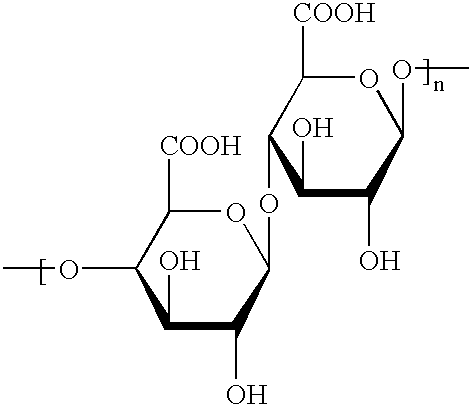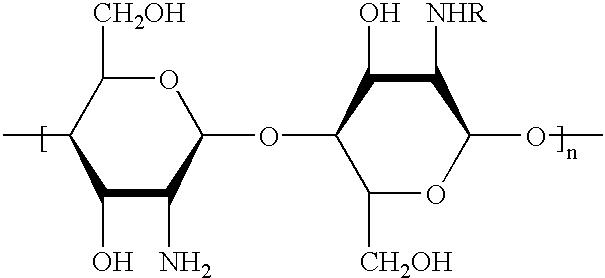Skincare agents
a technology of skin care agents and agents, applied in the field of skin care agents, can solve the problems of photochemical instability, rapid degradation under the influence, and none of these systems shows totally satisfactory stability, and achieves the effect of higher retinol activity and higher stability
- Summary
- Abstract
- Description
- Claims
- Application Information
AI Technical Summary
Benefits of technology
Problems solved by technology
Method used
Image
Examples
preparation examples
Example 1
[0135] In a stirred reactor, 0.5 g preservative (Phenonip.RTM.) was dissolved in 50 g of a 2% by weight aqueous preparation of carboxymethyl cellulose and the resulting solution was adjusted to pH 3.5. A mixture consisting of 10 g of a 10% by weight solution of retinol in soybean oil (Retinol.RTM. S20, BASF) and 0.5 g of sorbitan monostearate +20EO (Eumulgin.RTM. SMS 20, Cognis Deutschland GmbH) was then added with vigorous stirring. A 1% by weight solution of chitosan in glycolic acid (Hydagen.RTM. CMF, Cognis Deutschland GmbH) was then added with continued stirring in such a quantity that a chitosan concentration of 0.075% by weight--based on the preparation--was established. Finally, the pH was raised to 5.5 by addition of triethanolamine and the microcapsules formed were decanted.
example 2
[0136] In a stirred reactor, 0.5 g preservative (Phenonip.RTM.) was dissolved in 50 g of a 2% by weight aqueous preparation of polyacrylic acid (Pemulen.RTM. TR-2), a pH of 3 being spontaneously established. A mixture consisting of 10 g of a 10% by weight solution of retinol in soybean oil (Retinol.RTM. S20, BASF) and 0.5 g of sorbitan monolaurate +15EO (Eumulgin.RTM. SML 15, Cognis Deutschland GmbH) was then added with vigorous stirring. A 1% by weight solution of chitosan in glycolic acid (Hydagen.RTM. CMF, Cognis Deutschland GmbH) was then added with continued stirring in such a quantity that a chitosan concentration of 0.01% by weight--based on the preparation--was established. Finally, the pH was raised to 5.5 by addition of triethanolamine and the microcapsules formed were decanted.
PUM
| Property | Measurement | Unit |
|---|---|---|
| diameters | aaaaa | aaaaa |
| molecular weight | aaaaa | aaaaa |
| molecular weight | aaaaa | aaaaa |
Abstract
Description
Claims
Application Information
 Login to View More
Login to View More - R&D
- Intellectual Property
- Life Sciences
- Materials
- Tech Scout
- Unparalleled Data Quality
- Higher Quality Content
- 60% Fewer Hallucinations
Browse by: Latest US Patents, China's latest patents, Technical Efficacy Thesaurus, Application Domain, Technology Topic, Popular Technical Reports.
© 2025 PatSnap. All rights reserved.Legal|Privacy policy|Modern Slavery Act Transparency Statement|Sitemap|About US| Contact US: help@patsnap.com


